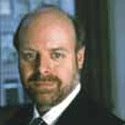
I don’t know how many times I’ve had a source or someone I was working with look at me cross-eyed when I asked for a follow-up on something we had discussed. “But I sent them an email,” I’m told. Or, “I left two messages—what more do you want me to do?”
The oft-quoted Woody Allen line that “80 percent of success is showing up” has always had marginal utility. It holds true if you’re a natural genius for whom one-liners and film fluency fall like loose change from your pockets. But, for most of the population, success requires a lot more than just showing up.
Sending an email does not mean that the job has been done. At the risk of stating the obvious: The job is done when the job is done. If the task at hand is more complex than anticipated, or if foundational circumstances have changed, so be it. But recognizing that requires active analysis and communication. Passive aggressive references to some nominal messaging won’t cut it.
Analysts of wage and labor economics refer to a concept known as the “optimal minimum.” This is a complicated and arcane precept that governs their thinking on the complicated interplay of pensions, benefits, and redistribution policies when setting wage levels. In everyday parlance, it has been hijacked by social scientists to signify the act of just getting by, also known, in acronymic scatology, as CYA.
All of this is implicit in this month’s deeply insightful cover story by Jill Goldstein, BPO offering lead for talent and human resources at Accenture. Goldstein examines the current state of outsourcing as it has evolved during the past 15 years, and asks both “why” and “why not.” She notes that new tools and techniques in talent management have helped pave the way for major progress in the practice. And, in her philosophy, those advancements have inured to the benefit of both its delivery of business value and its impact on strategic planning.
It’s been a bit of a slog. Hype by providers and wishful thinking by practitioners led to a lot of hurt feelings—not to mention broken engagements—during the past decade. Only now, Goldstein notes, can it be said that HRO is often delivering on the “transformational vision and promise of its pioneers.”
The practice has achieved this through green-eyeshade analytics and trial-and-error, sectoral solutions. Equally important has been the bilateral evolution of true collaboration, partnership between client and provider that drives deeper workforce engagement and productivity.
“At the same time,” warns Goldstein, “ it’s equally true that a significant number—if not the majority—of HRO engagements remain trapped in a transactional cost-reduction game that leaves both client and provider struggling to realize the full potential of HRO. Why are so
many organizations unable to make the leap from cost savings to business value? New research suggests that we may well be witnessing a contemporary example of the cobbler’s children that have no shoes.”
Goldstein points to “alarming shortfalls,” deep disconnects between what practitioners say they want and the investments that they actually make in the development and human management of their outsourcing relationships. She cites research that a paltry one-fourth of enterprise buyers make formal investments in training and developing their outsourcing management staff in areas that are strategic to their business. Which is doubly short-sighted, when you consider that business process outsourcing has been shifting dramatically away from mere cost savings toward truly measurable outcomes.
Walt Kelly, the mid-20th century genius who gave us Pogo (remember “we have met the enemy and he is us”?), offers some very helpful advice here. “It is not good enough for things to be planned,” he said, “they still have to be done; for the intention to become a reality, energy has to be launched into operation.”
Both sides of the outsourcing equation would do well to remember that the next time that they are in a death struggle over the letter and spirit of a service level agreement that has become cannon fodder. This stuff is hard work. It requires good faith and careful attention to detail.
Some would argue that it is human nature to believe in a free lunch. To just show up. To seek the optimal minimum. Some would be wrong.
Dirk Olin is Editor-in-Chief of HRO Today magazine.










